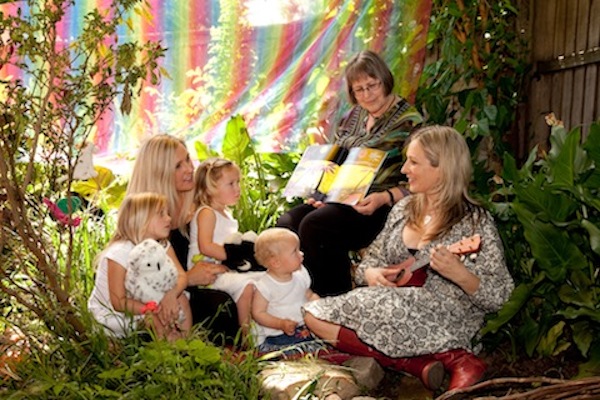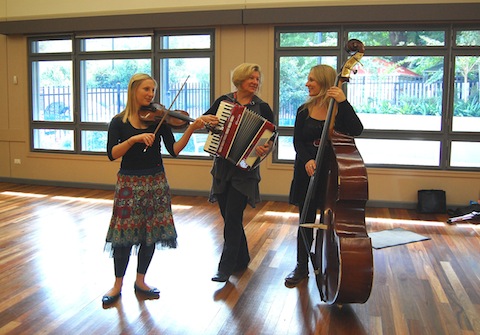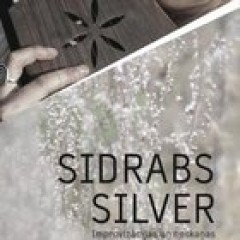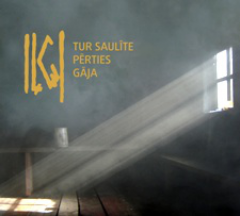
“Sing a Song” – mum Maija Upenieks with daughters Kaija and Nara and three granddaughters.
In March 2012 a delightful compact disc was launched in Wollongong, Australia, titled Celebrate the Seasons. It is the product of young Latvian/Australian musicians and educators with songs and dances from many lands for early childhood and primary school.
Included are two Latvian pieces “Gailītis” and “Plaukstiņpolka”, as well as the flavours of Australia, Torres Strait, Denmark, Poland, Japan, Spain, Holland and original songs by Kaija Upenieks. In this way it is very representative of the many cultures that co-exist in Australia and gives an insight into how the children of Latvian parents in the diaspora connect the two worlds.
There are 23 songs and dances altogether with vocals, accordion, violin, cello, double bass, ukulele, banjo, percussion and recorders selectively used on different tracks, adding to the specific ambience and diversity in style of the piece being represented, either as an instrumental or a song.
Kaija Upenieks began her early childhood program Sing a Song Dance Along in 2005 as an extension of a music program Music Time at Thirroul, established in 1984 by Kaija’s mother, Maija. Of the three now-adult daughters in the Upenieks family, Nara is the eldest, then comes Kaija, then Vēsma. As Kaija says, “Mum instilled in all of us the importance of connecting individuals and families through joyful musical experiences.” As children, the three girls participated in Latvian cultural events in Sydney, and both mother and father would drive one hour each way to attend these events in Sydney, and drive the girls to Latvian School on Saturdays. Sometimes this would happen as often as twice or three times a week.
As a result all three girls have a thorough musical background and perform on the CD, as do two of Nara’s young daughters. All three have qualifications in early childhood education, so Celebrate the Seasons takes into account the development of vital learning areas through interactive music and movement experiences in a playful way.
Latvian family friend Viktorija Mačēns (accordion and voice) joins in performances at various folk festivals with their world music group “Somesing Laik Zat”. Other performers on the CD are members of different groups Kaija has been involved with. The musical arrangements set this CD apart, as it is music that pleases the discriminating ear.
The underlying philosophy of this musical family has been connecting through music and this has led to performing and giving workshops at festivals, primary schools and other events.
Celebrate the Seasons is a great tool for both parents and educators. For more information and distribution: www.liferhythmsmusic.com

World music group “Somesing Laik Zat” – Vēsma Upenieks (violin), Viktorija Mačēns (accordion), Kaija Upenieks (cello).





